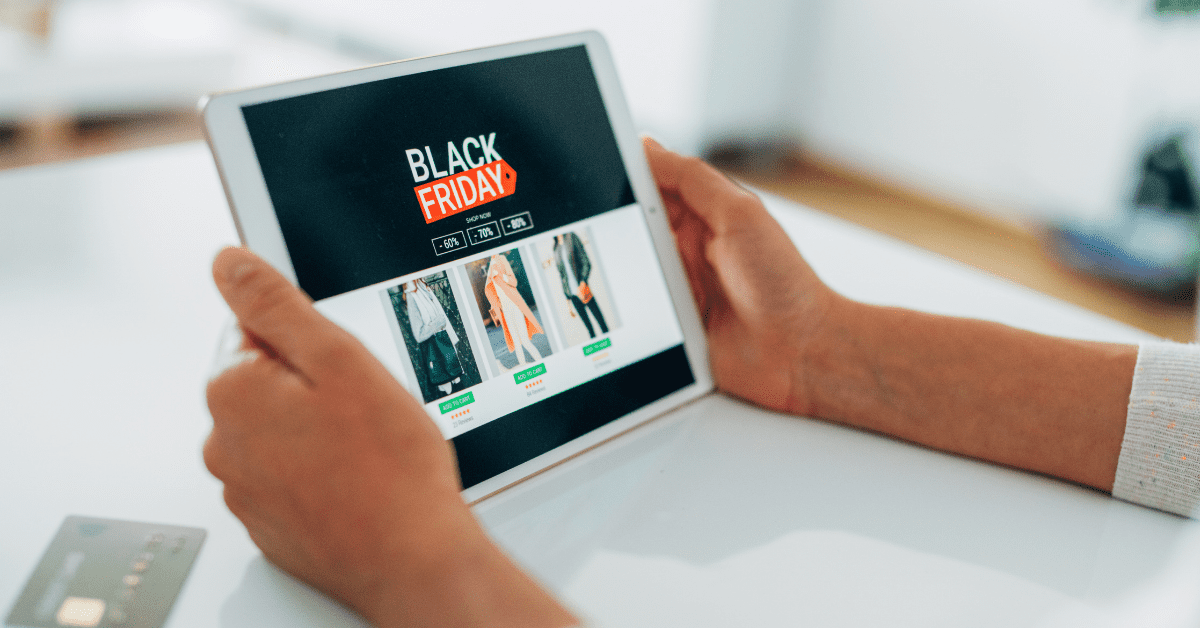
Chris "Coz" Costello
Senior Director of Marketing Research @ Skai

Chris "Coz" Costello
Senior Director of Marketing Research @ Skai

In the lead-up to the holiday shopping season, consumers reported that they would be shopping earlier than normal given the concerns over lack of inventory due to supply chain issues. Amazon research released in September showed that nearly half of consumers surveyed would begin their holiday shopping in October this year.
So, although total holiday spending this year is expected to break records, for the first time, Black Friday wasn’t as big as the previous year. Last year, consumers spent $9 billion on the day; this year, just slightly less at $8.9 billion.
Those topline numbers, however, spanned offline and online sales. Ecommerce has been broadly expected to expand its share of total activity for the holiday season and continue to grow, and the Cyber 5 (Thanksgiving through Cyber Monday) is still expected to be the biggest Q4 sales period. However, with brands and retailers offering online promotions throughout the entire holiday season, the role of these key dates in the holiday calendar may be shifting.
Let’s examine how digital ad channels and categories performed.
Brands started increasing their investments in earnest at the end of October in digital advertising’s hottest channel. High-profile media stories about supply chain issues meant consumers would likely be shopping online earlier in the season to get ahead of potential inventory and shipping bottlenecks. Reaching those online shoppers at the point of purchase has become one of the more critical digital engagement points for consumer goods brands to prioritize.
Spending on retail media ads continued to build throughout November towards its expected peak during the holiday weekend. The first two days give us some idea how the whole weekend will perform. Ad spending on Thanksgiving increased 69% compared to the daily average from November 1st through November 24th (the day before Thanksgiving). Last year was 63% higher versus the same period. Black Friday saw spending jump 168% (2.7x) compared to that pre-Thanksgiving November average, compared to a 206% increase for the same period last year.
Ad prices were one component of the spending increase, with Thanksgiving cost-per-click up 26% and Black Friday CPC up 35% compared to the rest of November. Last year saw less price inflation on Thanksgiving (+18%) and more on Black Friday (+45%).
Revenue in the retail media channel also grew compared to the rest of the month, with advertiser revenue on Thanksgiving up 44% and Black Friday increasing 191%, both compared to the daily average for November. On the higher-volume Black Friday, this means return on ad spend actually improved on the day.
If we look only at advertisers on the Skai platform who spent on ads in November of both 2020 and 2021, we can measure year-over-year (YoY) growth.
The average daily spend for November 1 through the day before Thanksgiving grew 16%, while spending on Thanksgiving grew 35% and Black Friday was up 6% YoY. This is consistent with the notion that high-profile store closures on Thanksgiving day could lead to more online shopping on the day, while some return to in-store shopping could limit growth on Black Friday itself.
Average CPC showed very similar behavior, up 16% YoY for pre-holiday November, up 28% for Thanksgiving and rising by 8% on Black Friday.
Here are some key categories that saw bigger-than-average changes for Black Friday. All increases are compared to the daily average for the period from 11/1 through 11/24.
Under normal circumstances, search engines are a core resource for consumers to research purchases, particularly during the holidays. Paid search advertising has subsequently been a fundamental investment for brands in Q4, and even more so given the explosion of online commerce over the last two years. Marketers have been very active with their paid search programs for the last twenty holiday shopping seasons and 2021 has followed that script so far.
Ad spending for “consumer goods & retail” advertisers was up 54% on Thanksgiving compared to the November daily average from before the holiday. Last year was +53%. Average CPC was only up 33% on Thanksgiving compared to November’s daily average, meaning that an increase in click volume also contributed.
The increase in ad spending for Black Friday was slightly higher than last year, rising 179% compared to pre-holiday November, while last year only increased 171%. Some of this difference can be attributed to sharper ad price increases, which were up 81% on Black Friday this year compared to 56% last year.
As for the return on that investment, advertiser sales across these retail-focused advertisers also increased 179% on Black Friday, meaning that the huge shopping day absorbed the increase in activity, and in spending, without any degradation of overall program performance.
Using our “same-advertiser” filtering, year-over-year spending for consumer goods & retail advertisers in the paid search channel was fairly consistent over the three periods so far. Spending volume grew 21% over last year both for the pre-holiday period and on Thanksgiving itself, while Black Friday rose by 20%.
CPCs showed a little more variation compared to last year, up 13% before Thanksgiving, 23% on Thanksgiving and 27% on Black Friday.
While retail media and paid search are key channels to reach online shoppers actively searching for product information, social media also plays an integral role. Although recent changes in privacy frameworks have made elements of direct response marketing more difficult for social media, its place higher in the online commerce funnel remains attractive to marketers, driving awareness while also being an effective promotional vehicle to drive social users to purchase directly to online retailers and brand sites.
With that in mind, ad spending on Thanksgiving and Black Friday did not grow as much compared to the rest of November across paid social ads as the other digital channels or show as much growth over that period as last year. Ad spending was up 29% on Thanksgiving compared to the November daily average and rose 55% on Black Friday versus that same period. Last year increased 55% and 102% for Thanksgiving and Black Friday, respectively.
Similarly, ad prices were up compared to the rest of the month, but by lower percentages than last year. The cost per thousand impressions (CPM) for social ads increased 24% this year versus 38% last year on Thanksgiving and 47% this year versus 79% last year on Black Friday.
When we compare same-advertiser performance for this year versus last year, we see more evidence that aligns with the upper funnel hypothesis. Average daily spending before Thanksgiving increased 16%, while paid social spending on Thanksgiving and Black Friday was down by 6% and 26%, respectively. This is, again, consistent with advertisers pushing their branding campaigns earlier in the season to set the Thanksgiving table, so to speak.
This post represents an aggregate analysis of customers managing digital advertising through Skai’s platforms. It compares daily performance for Thanksgiving/Black Friday to the average daily performance in November 2021 (up to the day before Thanksgiving) across “Consumer Goods & Retail” accounts in the retail media, paid search, and paid social advertising channels. The year-over-year analysis includes only accounts with spending in both November 2020 and November 2021.
You are currently viewing a placeholder content from Instagram. To access the actual content, click the button below. Please note that doing so will share data with third-party providers.
More InformationYou are currently viewing a placeholder content from Wistia. To access the actual content, click the button below. Please note that doing so will share data with third-party providers.
More InformationYou are currently viewing a placeholder content from X. To access the actual content, click the button below. Please note that doing so will share data with third-party providers.
More Information